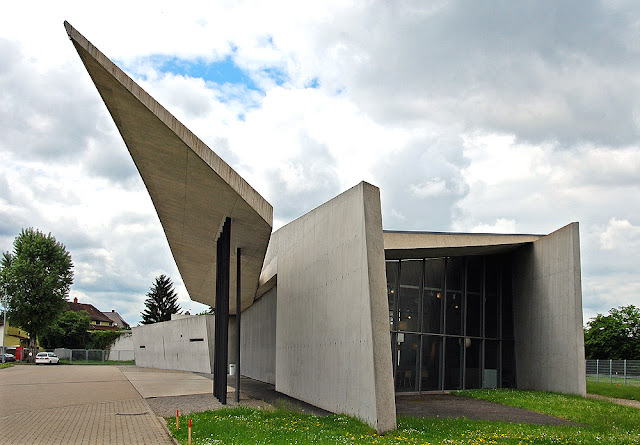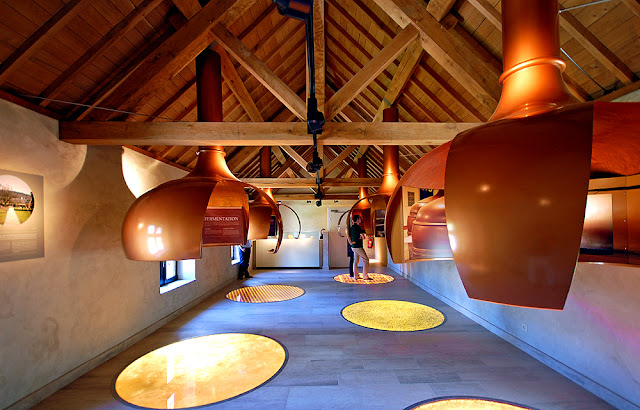For another rainy day activity, we had discovered
that there was a design museum in Weil am Rhein, on the outskirts of Basel. Vitra,
a Swiss furniture manufacturer, has a unique factory complex comprising
buildings by various world renowned architects including Nicholas Grimshaw,
Frank Gehry, Zaha Hadid, Alvaro Siza, Herzog & de Meuron and my favourite,
Tadao Ando.
The Frank Gehry designed museum is the centrepiece of
the Vitra Campus, but strangely, it was the most underwhelming of the buildings.
It appeared to eschew the edict of form following function with its profligate
use of “look at me“ twirls and random angles. Subsequently, this made it very
easy to photograph.
I have been an admirer of the Japanese architect Tadao
Ando ever since I recognised his 1981 Koshino House in Ashiya, Japan as “my”
house. My taste for shuttered concrete has been ridiculed over the ensuing
years, but it has stood the test of time. Just being in and
around his conference pavilion here at Vitra has confirmed my fascination with
Ando’s brutally beautiful simple style. This visit had the same spiritual quality
as my pilgrimage to the house and studio of Alvar Aalto in Helsinki.
The VitraHaus, designed by Herzog and de Meuron in
2010, is the flagship store for the Vitra Home Collection. The exterior appears
as a random stack of graphite black, pentagonal tubes. The interior quite
cleverly guides the visitor down through five spectacular levels of the
company’s products like a very up-market Ikea. The furniture on display was
often intelligent, invariably ultra stylish and expensive. But, I am afraid
that I was more taken by the building itself, especially the delightfully
sculptural staircases.
The Zaha Hadid designed fire station displays none
of the hallmark fluid shapes of some of her other famous projects, but its
angularity is highlighted by zig-zag, shard-like shapes of shuttered concrete
panels. I loved it.
























